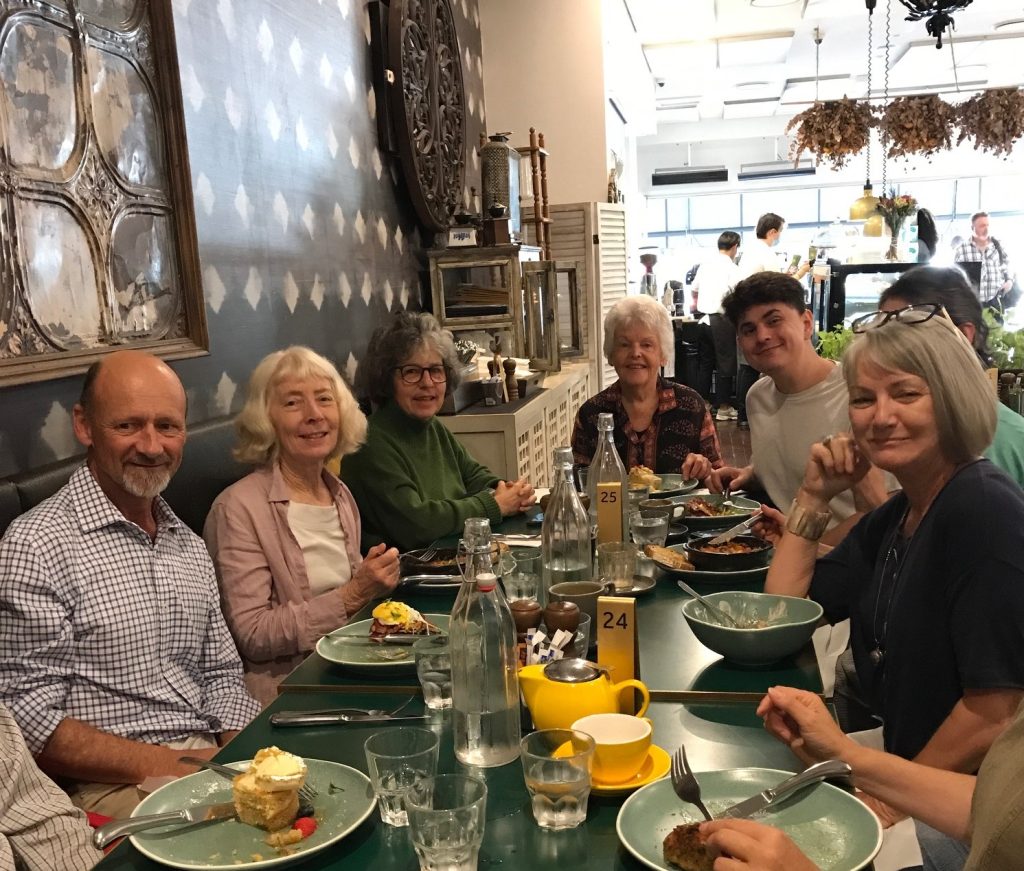By Judy Christie, Blue Wren Subcommittee member, Bulletin 9/2023, November
The eleventh annual Glebe Forest Lodge bird survey was held on 22 October in warm sunny conditions. Twenty-one people participated in this year’s ‘snapshot’ spring survey working in ten different groups counting birds in leafy and non-leafy sites across Glebe and Forest Lodge. Sightings were made across Glebe’s parks, trees and waterways as well as on walls, roofs, footpaths and busy traffic intersections.
The following were the sites surveyed this year; similar to previous years with many sites now being surveyed by the same people every year, so building up good knowledge of where to look and what to look for.
- Harold Park parklands, Tramsheds precinct, ‘The Hill’ & Jubilee Oval.
- Federal Park saltmarsh and bushland surrounds.
- Bicentennial Park foreshores and surrounds and Bicentennial Park 2 mangroves.
- Orphan School Creek and Johnstons Creek corridor from the Wood Street Lands to the Tramsheds.
- Forest Lodge streets including along St Johns Road and nearby streets, and Foley Park
- Pocket Parks – Arthur (Paddy) Gray Reserve; John Street Reserve (Habitat Garden); and St James Park.
- Glebe Library precinct and gardens.
- Palmerston Ave and Foreshore Walk from Bridge Road up to and including Ferry Road, including adjacent parks and reserves.
- Glebe Foreshore Walk from Pope Paul VI Reserve to Cook Street
- Victoria Park, especially around Lake Northam.
Most groups commented that the birds were fairly quiet on our Sunday morning survey. Nevertheless, there were exceptions including the very large number of rainbow lorikeets, all out feeding in the sunshine on flowering bottlebrush and blossoming Angophora and other trees. This helped boost the total number of birds seen to eight hundred and seventy (870) – several hundred more than seen in last year’s damp and overcast conditions. Pleasingly, the tree martins have also returned for breeding and their animated twittering song can be heard above different parts of Glebe and especially near their nesting site on the corner of Ross Street and St Johns Road.
Thirty different species were seen – less than in 2022, yet with the number boosted by two new waterbird species seen in Victoria Park (hardhead (a duck) and purple swamphen) and two species ( the tawny frogmouth and eastern koel) which were seen and heard outside the Glebe / Forest Lodge boundaries. The increase in waterbirds at Lake Northam may be a result of improving water quality after some work done by Council earlier this year. It may also be that the ongoing drought has brought more waterbirds in from inland areas.
Noisy miners were again seen in large numbers across the whole survey area to the exclusion of most small birds apart from the jaunty willy wagtail. Non-native species were also in large numbers, especially feral pigeons (rock dove) whose number had doubled. The lawns of Harold Park seem to be a favourite spot, as well as the Bicentennial Park lawns.

It is often what is not seen that is also most notable in survey results. In this case there were quite a few absentees. Where were the brush turkeys that have been frequenting our streets? The striated heron and chestnut teal, both common in the Johnstons creek system, were a ‘no show’. Perhaps the low tide made a difference. The group surveying around Blackwattle Bay felt that there was much less bird life around, possibly attributed to the level of disturbance by the Fish Market development. The red wattlebird was also missed and may be moving out of Glebe / Forest Lodge entirely. Although there has been increased planting of street trees and park trees in the last 12 months, some of the tree species selected may be encouraging the bossy, aggressive birds like native noisy miner and omnivorous predatory species like pied currawong and the grey butcherbird.
As a one-off annual ‘snapshot’ survey, we cannot hope to find every bird in Glebe / Forest Lodge, but after 10 years of surveys covering the same sites, we can develop a fairly robust picture of the trends and indicators of the health of our avian community. It is a mixed picture – some losses and some gains. Last week I saw a small family group of Superb Fairy Wrens, including at least one juvenile bird, only 2.69 kilometres from the Glebe Foreshore Parks. With a few healthier habitat ‘stepping stones’ along the corridor, maybe our Blue Wrens will make it back to Glebe one day.
Once again, we had a birdwatchers’ breakfast celebration at Esca to conclude our morning’s activities. Thank you to all volunteers who helped to make a very successful and enjoyable spring morning. If you would like to see more detailed survey results for a specific location, please contact the Blue Wren Subcommittee.











One comment. Please add yours.
Great read. Surprising that the Brush Turkey is absent. I saw Three Brush turkeys in the Glebe/Forest Lodge area last Friday, including a brush turkey chick, indicating that they are having breeding success in the area.